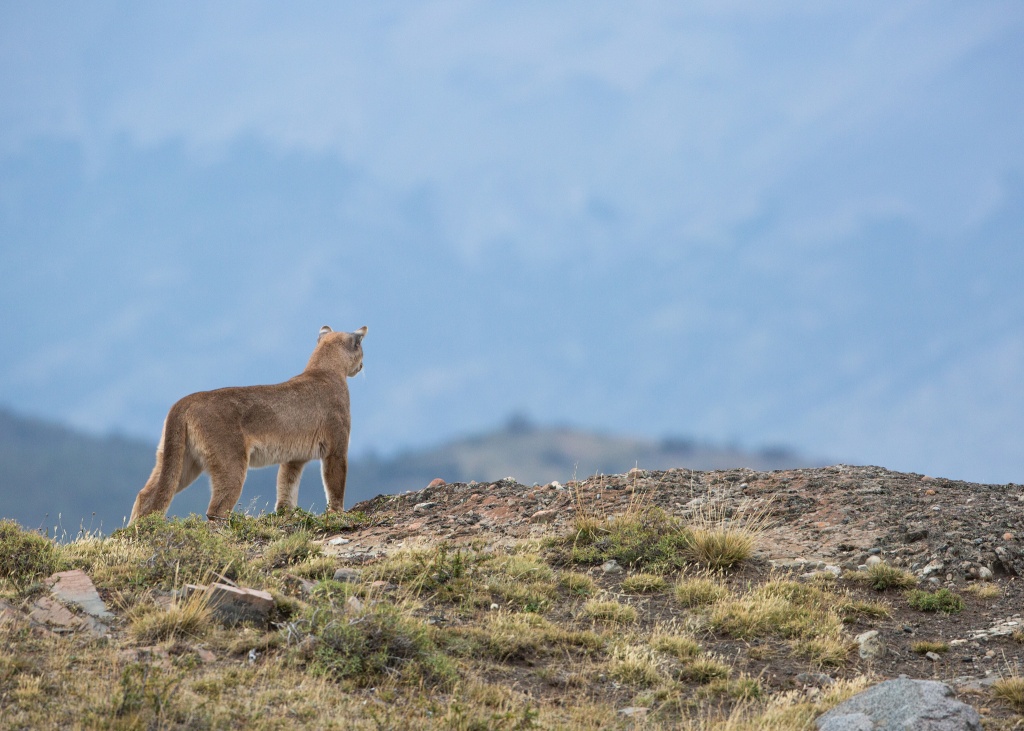
The time has come for the second post in the collaborative blog series “Pumas in the Eastern United States”. This article was written by Josh Gross from The Jaguar and I encourage you to follow his blog and learn about his work on big cats. Let’s begin.
On June 11, 2011, a car traveling along the Wilbur Cross Parkway in Milford, Connecticut hit an animal that was crossing the road. But this was not a creature that Connecticut motorists were used to encountering: it was a puma (AKA mountain lion, cougar, or Puma concolor).
A team of scientists examined the animal and concluded that it had never lived in captivity. This made it the first wild puma that had been confirmed in Connecticut in nearly 200 years (Hawley et al., 2016).
As Jess Turner of definearth wrote in her guest post, pumas once ranged throughout North America. When Europeans arrived, however, they set out to eliminate as many wild predators as they could. A system of state bounties and federal extermination programs nearly eliminated grey wolves (Canis lupus) from the continental United States (Robinson, 2005) and drove pumas out of the eastern two-thirds of the country. The last eastern puma was killed in Maine in 1938 (Hawley et al., 2016; Glick, 2014).
However, rumors of a remnant population of eastern pumas have persisted for decades. McGovern and Krester (2014) wrote that from the years 1934-2000, visitors and residents of Adirondack State Park in New York reported 168 puma sightings to the New York State Department of Environmental Conservation (DEC).

Did the presence of a wild puma in Connecticut confirm such rumors? No. The real story is even more remarkable. Genetic analysis revealed that the Connecticut Cat, as he came to be called, walked from the Black Hills of South Dakota to the eastern coast of Connecticut (Hawley et al., 2016). In fact, investigators uncovered enough fecal samples, hair samples, photographs, and video footage to piece together much of his journey.
The Connecticut Cat probably left the Black Hills sometime in 2009. He miraculously made it across the shooting gallery of the Great Plains to the town of Champlin, Minnesota, where he was filmed by two police officers. The Connecticut Cat was then seen three times in Wisconsin, where he appeared to be heading for Chicago. As Will Stolzenburg (2017) pointed out in his informative webinar (link in references) this would have meant almost certain death.
Thankfully, the Connecticut cat veered north. He crossed into Michigan’s Upper Peninsula and then vanished (Stolzenburg, 2017).
The Connecticut Cat reappeared in the U.S. on December 16, 2010. He was likely in Canada during his absence. This time he was spotted by Cindy Eggleston near her home in Lake George, New York (McGovern & Krester, 2014; Stolzenburg, 2017). But the Connecticut Cat was not done.
The Connecticut Cat continued moving east. On June 5, 2011, he encountered two professors in Greenwich, Connecticut – the second of whom came to within a few yards of the cat near a foot-bridge. Being a typical non-confrontational puma, the Connecticut Cat climbed under the bridge and headed for cover.
Six days later, the Connecticut Cat was struck by a vehicle and killed. By that point, he had likely traveled over 2,700 km (1,678 miles) from his birthplace (Hawley et al., 2016). But why?

The answer comes from puma biology. Pumas, like all big cats, are territorial. When juvenile pumas reach sexual maturity at about 18 months of age (Hunter, 2015) they set out in search of a territory of their own. However, both sexes have slightly different priorities.
Female pumas simply have to find a territory that has enough prey to support them (Stolzenburg, 2017). Their territories can overlap to varying degrees with those of other females, depending on the population (Hunter, 2015).
Males, on the other hand, have to find a territory with ample prey and females that they can mate with. Their territories also overlap less than those of females, and tend to be considerably larger (Hunter, 2015). As such, male pumas usually disperse much further than females; they keep going until they find a patch of land with prey, females, and no dominant males.
The reason the Connecticut Cat walked so far is that he never found any female pumas along his route. Had he begun his eastward trek two decades later, he likely would have encountered a female much sooner. The reason for that is that pumas have begun to recolonize the Midwestern United States.

References
- Glick, H. B. (2014). Modeling cougar habitat in the Northeastern United States. Ecological Modelling, 285, 78-89.
- Hawley, J. E., Rego, P. W., Wydeven, A. P., Schwartz, M. K., Viner, T. C., Kays, R., … Jenks, J. A. (2016). Long-distance dispersal of a subadult male cougar from South Dakota to Connecticut documented with DNA evidence. Journal of Mammalogy, 97(5), 1435-1440.
- Hunter, L. (2015). Wild cats of the world. New York, NY: Bloomsbury Publishing Plc.
- McGovern, E. B. & Kretser, H. E. (2014). Puma concolor cougar in the Adirondack park: Resident and visitor perspectives. Robinson, M. (2005). Predatory bureaucracy: The extermination of wolves and the transformation of the west. Boulder, CO: University Press of Colorado.
- Stolzenburg, W. (2017, September 28). Heart of a lion with Will Stolzenburg [Webinar].


Leave a comment